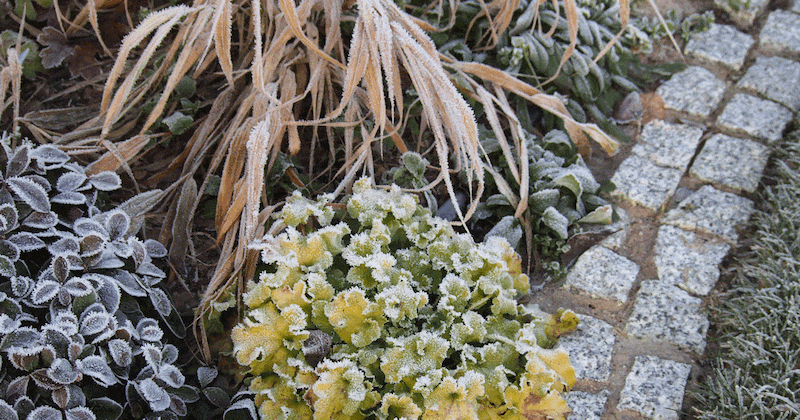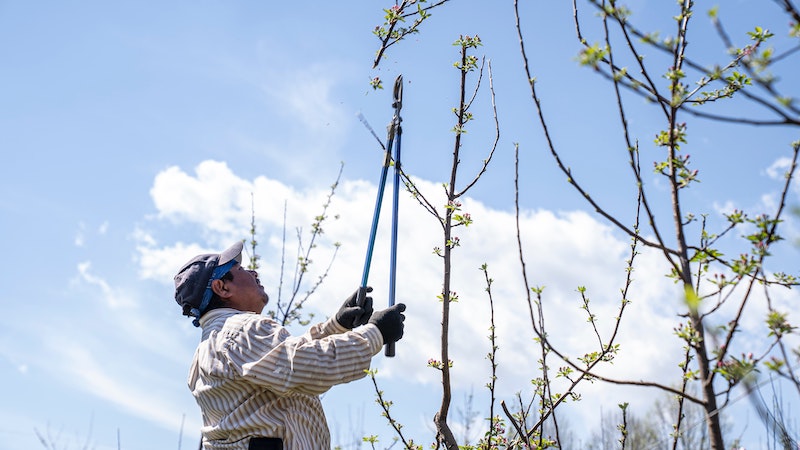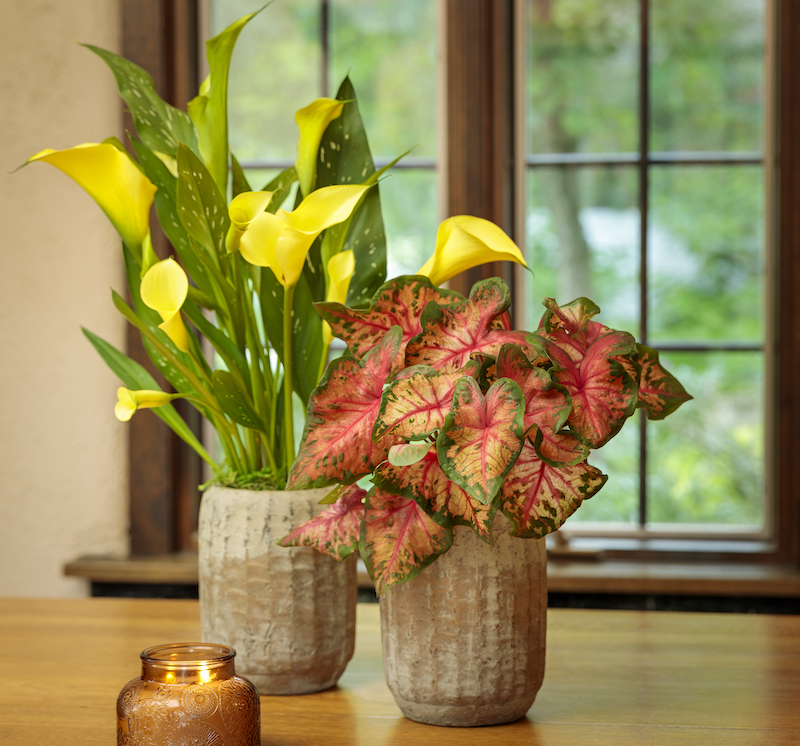Depending on the region, winter can be a pretty trying time for perennials, trees, shrubs, and other seasonal plants. To set yourself and your garden up for success, it is important to choose plants that are suitable and cold hardy for your region, based on your agricultural growing zone. With colder temperatures, changes in moisture, and fewer hours of sunlight, most plants will go through some period of dormancy and reduced growth. By choosing plants that can handle winter in your area, and with a few of these winter growing tips, you can ensure that your garden will return to its lush, beautiful self come spring!

Protecting Plants in Winter
There are a few things that you can do to prepare your plants to make it through the toughest of conditions. First, it is important to plant most perennials, trees, and shrubs in well-draining soil to prevent their roots from sitting in water during wetter months. In the winter, standing water can freeze, damaging a plant’s roots or even pushing the plant out of the ground, called frost heave.
In colder regions, laying 2-3 inches of mulch around the base of your perennials, trees, and shrubs can help protect their roots from extreme temperatures, increasing the likelihood of plants bouncing back from cold damage. In addition, some sensitive evergreens like certain arborvitae varieties can be wrapped in burlap and other breathable yet insulating materials to reduce the risk of frost burn.

Cutting Back Plants For Winter
Determining when to cut back perennials, trees, and shrubs is fairly plant specific, so it is important to read up on your specific plant before breaking out the pruning shears or loppers. In general terms, perennials and shrubs can fall into a few main categories that determine their winter care. Herbaceous perennials, for example, are those that die back completely once exposed to cold temperatures. These perennials, such as yarrow and hardy hibiscus, can be cut back to the ground once they have gone completely dormant in the winter or early spring – there will be no new growth on those dry, dead stems.
Woody perennials and shrubs, like butterfly bush and hydrangea, however, may require a bit more care when cutting back for the winter, depending on whether the plant blooms on old or new growth. Pruning a plant at the wrong time, like shaping a forsythia in the winter when its spring buds are already set, can prevent the plant from growing or blooming properly. When in doubt, it is best to err on the side of caution and do a bit more research.

Plant Winter Care in Pots
Once a plant is put in a container, pot, or planter, its growing conditions and care are different from the same plant in a garden bed. When a plant’s roots are kept above ground, they will experience temperature fluctuations more intensely. This is especially true in the winter, when a plant’s roots are in danger of freezing. For this reason, it is best to bring borderline-hardy potted plants into an unheated garage or shed in the winter. This will allow your plant to go dormant as it would out in the garden without the risk of root damage.
An alternative to moving a pot is to replant it directly into a garden prior to the soil freezing. In addition, some plants can be brought indoors to a sunny spot to grow as a houseplant. There are exceptions to this, however, so it is important to research your plants before deciding where they should be moved for the winter.
Watering Plants in Winter
Whether or not you will need to water your garden through the winter will be greatly dependent on the region and climate. For those gardens located in the typically warm Southern states, access to warm and sunny weather may mean that your plants will continue to grow through the winter. While watering can usually be cut back in these areas, you may still want to water deeply and regularly to prevent your plants’ roots from drying out.
In the colder Northern states, very dry soil is actually more dangerous for dormant plants, especially evergreens, than one might think. In addition, wet soil insulates roots better than dry soil, so watering plants (soil only!) just before a deep freeze can often be quite beneficial. In climates with wet winters, watch for poorly draining sites that leave plants in standing water. Most plants cannot tolerate extended time in soggy soil and will need to be relocated.
Growing Plants Indoors
While it may be tempting to bring your beautiful potted catmint indoors for the winter, there are a few things to consider. Many flowering perennials and shrubs flower so beautifully because they are given the chance to go dormant and rest through the winter. Without that exposure to cold weather, the following growth could be stunted and the bloom unimpressive. Plants that do benefit from being kept in a warm, sunny spot indoors include those that are hardy in the upper growing zones, like tropical plants or houseplants that were kept outside through the summer.

Steps To Care For Plants in Winter
The best way to keep your plants happy and healthy through the cold months is to know what they need, how they grow, and what you can do to protect them. Knowing what plants you are working with will ultimately help you find all the information you will need to prune at the right time, water properly, and protect them adequately.
Step 1 - Research your plants
Step 2 - Mulch the root zone or cover the entire plant with a frost blanket
Step 3 - Cut back on watering
Step 4 - Prune at the right time
Step 5 - Protect potted plants
 |
Author Lynn Gusman - Published 1-18-2023 |
